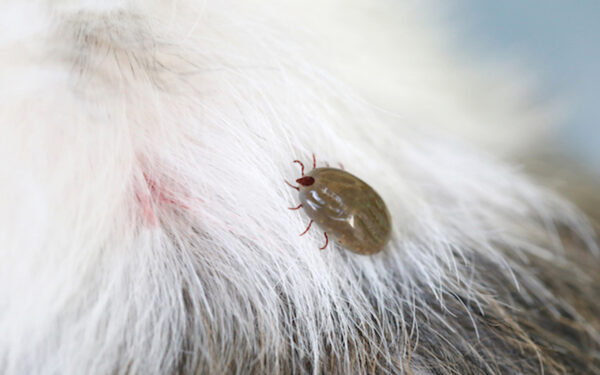Dogs can get scabs on their skin, just like people. They’re not worms or any other kind of parasite, and they’re not necessarily a sign of an underlying health problem. But they can be itchy and uncomfortable for your dog, especially if the scab is in an area that your dog can’t scratch easily.
What are these things called? Scab? Nope. Tick scab? Sort of… It’s a type of skin lesion called “scabbiness” that is most often caused by ticks and mites. In dogs, the most common location for a tick-scab to develop is around the ears and jawline where ticks tend to like hanging out.
What Are Tick Scabs?
A scab is a crusty buildup of dead skin cells that forms when a wound heals. The scab is the body’s natural attempt to keep out infection, so it creates a barrier that stops germs from getting in while the wound heals. It falls off once the wound is healed.
There are a few reasons your dog might get a scab on their skin, and the easiest way to tell which one it is is to look for a tick. If you see a tick embedded in the scab, it’s almost definitely a tick scab. A tick scab looks like a scab from any other type of wound, but it has a small black or brown dot in the center.
That dot is the tick’s head. While ticks can cause lots of problems, including disease and allergic reactions, if your dog has a tick scab, it means the tick is dead. That’s because a tick has to be alive to embed its head in your dog’s skin. Once the tick dies, it falls out of the wound, leaving a scab with its head embedded in it.

How to Treat Tick Scabs on Dogs
If the tick scab is not too large, then you can just remove the tick scab with a pair of tweezers and clean the area thoroughly. Because the tick will be dead, there’s no need to worry about any of the diseases ticks can transmit. If the tick scab is larger or looks like it’s gotten into your dog’s skin, then you’ll want to see your vet.
Your vet will likely clean the area and apply an antibiotic and/or anti-fungal cream to the wound. They may also recommend a topical or oral medication to help with the itching, depending on where the scabs are.
How to Prevent Tick Scabs in Dogs
There are some steps you can take to help prevent tick scabs in dogs. Start by making sure you are checking your dog for ticks properly. For most dogs, you’ll want to check their ears, the base of their tail, and anywhere else they might be particularly tick-friendly. If you find a tick, don’t panic. Simply use a pair of tweezers to carefully remove it.
Remember, ticks don’t like to be removed. They’re designed to stay on your dog and keep sucking blood until they are very, very dead. The best way to get them off is to grab them as close to the skin as possible and just pull. Don’t try to smush them or spray them with anything. If you can’t get the tick off the first time, don’t worry. Just grab it again and keep trying.
Once it’s off, you can clean the wound with some alcohol to stop any infection and keep an eye on it to make sure it doesn’t become infected.
How long does it take for a tick to heal on a dog?
Animals will recover from poisoning 3-4 days after all ticks are removed, but these animals will not live that long or will have complications that are already life-threatening. To try to save their lives, they can be connected to a life support or ventilation machine.
Who Can Help Your Dog With Tick Scabs?
If you do encounter a tick scab, your vet can help you get rid of it and clean the area. But sometimes the scabs won’t go away, and your vet may suggest that your dog take antibiotics to help the healing process. However, antibiotics come with risks.
They can be hard on the digestive system and cause diarrhea or vomiting, and they can make your dog more susceptible to infections. This is especially true for dogs who don’t live inside. If your dog is on antibiotics for an extended period of time, you can help counteract the side effects by adding probiotics to their diet.
Probiotics are the “good” bacteria that lives in the digestive tract and helps with digestion. They also work to counteract the effects of antibiotics on the digestive system. So if your dog needs antibiotics, make sure to add a probiotic to their diet. This will help their body get the most out of their antibiotics while helping to minimize side effects.
Conclusion
When it comes to dog health, it’s easy to focus on the big stuff. Your dog gets worms. Your dog gets fleas. Your dog has a tick scab.
But scabbiness is not a serious problem, and it’s not something that will affect your dog’s health in the long run. What it is, however, is an inconvenient problem that can be easily treated and prevented. So the next time your dog has a tick scab, don’t worry. It’s just one of those things dogs get.